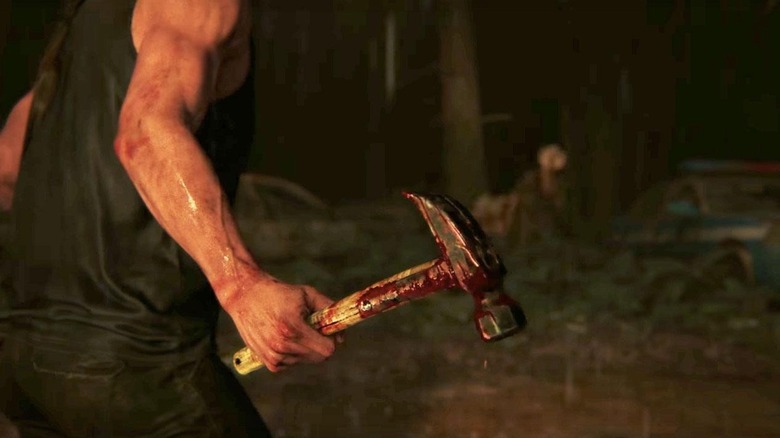Sony Patent Will Change Video Game Violence Forever
Violence in video games has long been a subject of much debate. From the heightened supernatural Fatalities in the "Mortal Kombat" series to the more grounded and harrowing deaths seen in the "Last of Us" series (per USgamer), gaming fans and critics alike have been split on depictions of death and destruction in digital form. Some have found the violence in video games a reason to pause, while others have taken comfort and enjoyment in the fact that video games are still relatively removed from reality. However, a new patent published by Sony Interactive Entertainment might change all of that.
The patent, which went live on Sept. 7 and has been given the relatively unambiguous title of "Simulating Motion of Computer Simulation Characters to Account for Simulated Injuries to the Characters Using Current Motion Model," aims to make the effects of in-game violence on computerized characters look and feel much more realistic.
The patent explains that injured characters in games are typically animated using "'injury' animation sequences that are separate from the motion model used for non-injured characters." This patent, on the other hand, would make it so that the injured model and the unharmed model are one and the same, allowing for realistic and seamless reactions to injuries. Here's how Sony envisions putting this new patent to work.
Sony's new patent will make game injuries feel more realistic
Essentially, the idea behind this patent is to implement adverse affects to the character model that is injured. This could be seen in both visual cues and in how a character moves or is controlled. Sony's patent application lists a few different ideas for how these effects could be seen or felt during gameplay: "An injury to a leg may be emulated by assigning feet a heavier weight or by depriving the player of control over the leg. The facial reaction of the game character may change to emulate pain or distress."
These effects could be isolated to a single limb or to multiple spots, but the general idea is the same: When placing pressure on these injured areas — say, taking a step on an injured leg — the character model will react accordingly, either by wincing or walking more gingerly. As more pressure is placed on this limb, or "link," the limb's effectiveness may decrease over time. Sony's end goal with this patent is to replicate "the true movement of an injured person as closely as possible."
Of course, not every patent ends up being fully implemented, but this is an interesting prospect for fans of more visceral gaming experiences. Maybe this will make you think twice about that "Skyrim" soldier who just told you about the time they took an arrow to the knee.


